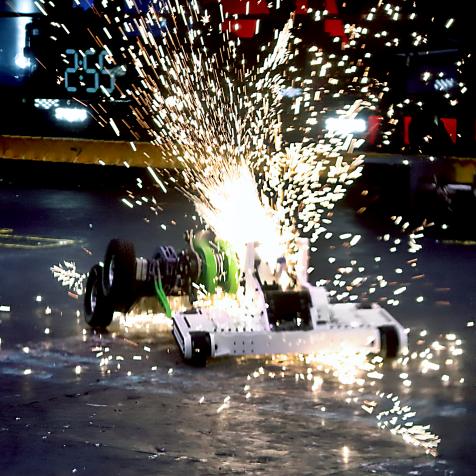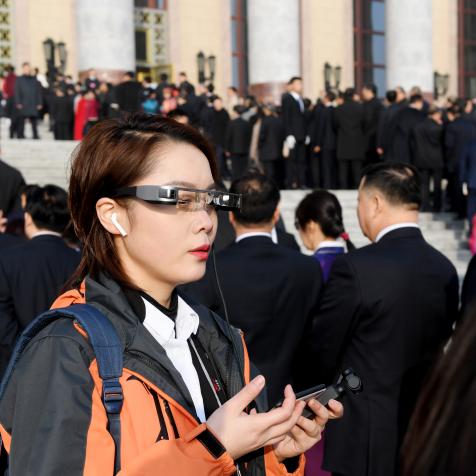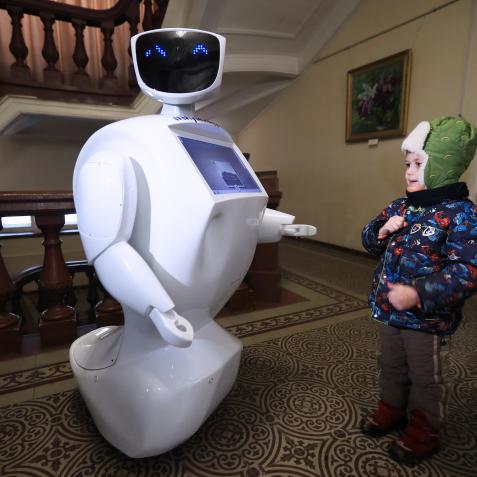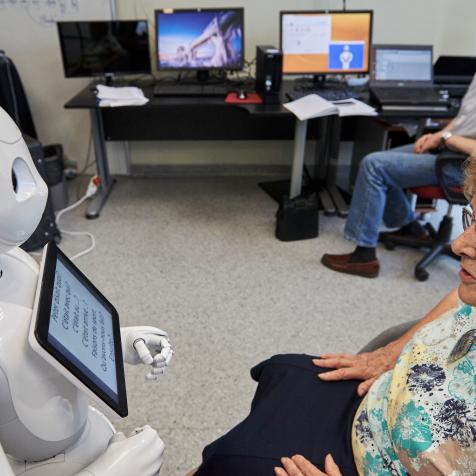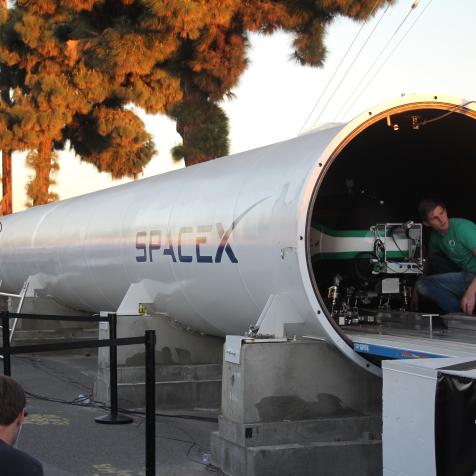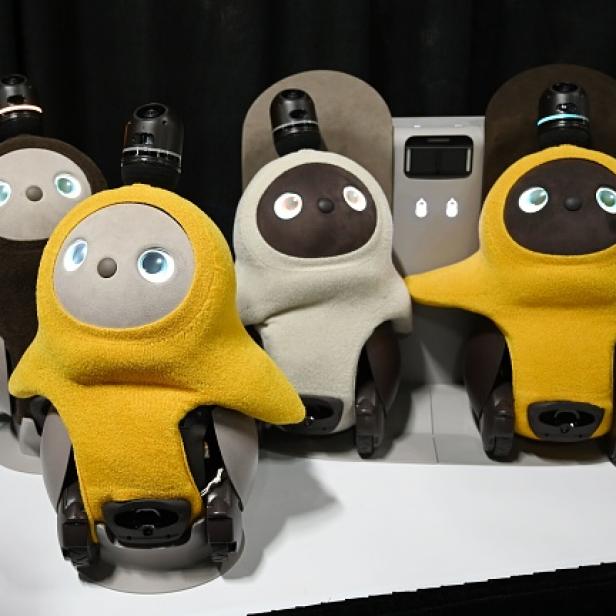
GettyImages/ROBYN BECK
Learn More About the Soft Robots that are Changing the Field of Robotics
Think of a robot. If it wasn’t C-3PO that sprang to mind, it was probably the popular image of a metal humanoid, or perhaps an industrial robot arm used in manufacturing. Well, soft robotics is much more flexible. Soft robots are built using elastomeric – soft rubber – materials, plastics, and fabrics. They are simply a bit more huggable.
Photos
See All PhotosThat does make them a bit less hard-wearing and durable, but more adaptable, sensitive, and less expensive to build. And they are strong too, as MIT and Harvard’s Wyss Institute showed with an artificial muscle system capable of lifting 1,000 times its own weight. “It’s like giving these robots superpowers,” said Daniela Rus, MIT’s professor of electrical engineering and computer science.
Researchers created soft robotic grips and lifters with muscles based on origami folds. Encased in a flexible skin with air or fluid and powered using pressure, they were able to make simple robots with programmable multi-directional motion. All this within 10 minutes using materials that cost less than $1!
Another advantage for soft robots lies in their suitability for human interaction. Scientists at Harvard’s Biodesign Lab are using soft wearable exosuits to help people with injuries or neurological conditions – such as stroke – to walk independently again. These lightweight textile suits are fitted with sensors that provide feedback on an individual’s gait. Analysis help adapt the wearable robot to each person’s particular walking style. Plus, the softer textiles are less rigid and feel just like wearing trousers.
Breakthroughs in areas, such as self-healing materials, would improve exosuit durability and make quick repair possible too. Engineers at the Vrije Universiteit Brussel in Belgium have shown just how it could be achieved with a material that repairs itself when heat is applied in just 20 to 40 minutes.
In a world where the overall trend in industrialized countries is towards ageing populations, the evolution of soft robotic helpers could be pivotal in providing low cost geriatric healthcare at home. Think biocompatible and biodegradable materials, areas where soft robotics can improve healthcare. If robots can work inside the body or even dissolve once they have achieved their purpose, it could revolutionize surgery and other clinical procedures.
In 2017, Ellen Roche pioneered a silicone-based cardiac sleeve in a project between Harvard University and Boston Children’s Hospital. The robotic sleeve safely interacts with soft tissue, helps the heart beat, and reduces the risk of clotting and the need for blood thinning medication. It cleverly mimics the outer layer of the heart, powered by soft pneumatic actuators.
Just as illuminating in its simplicity was a school project from Philadelphia. Students at the Haverford School created biodegradable, edible robots that move when pumped with air. This shows how robots, like Harvard’s heart pump, could be built from materials that degrade safely once they have fulfilled their function inside the body.
But when it comes to wild inspiration for soft robots, there’s nothing quite like nature. Plant and animal evolution has a lot to teach us about form, function, and biomimicry.
Researchers, again from Harvard, created a soft robot snake that uses the Japanese art of paper cutting – kirigani – to program its behavior. It’s thought that the snake can move in novel ways and explore environments other robots find it difficult to move through. One suggested application is in laparoscopic surgery.
Adding to the menagerie are a leech-like robot that can climb walls, a robotic limb that can change shape between a turtle’s flipper for moving through water, and a tortoise’s leg for walking on land. This ability of soft robots to flex into different shapes is enabled by often simple architectures. Hexagonal-shaped bee honeycomb is the basis for the HPN Manipulator – an easily 3D printed material that moves by compressing air and has a relatively large load-bearing capacity.
Putting this strong yet soft principle into the service of manufacturing is making a world of difference in industrial manufacturing. The company Soft Robotics modeled its gripping technology on octopus tentacles to create a hand capable of picking and packing the most fragile or squashable items, including foods.
The RoCycle material-detecting robot has a Teflon hand with tactile sensors that can sort items into plastic, paper or metal. This trend will eventually lead to more imaginative designs for robots – or cobots – that work collaboratively with people.
In dirty and dangerous environments like space or underwater, both NASA and the US Navy are investigating the use of robots built entirely from air-filled fabrics. These lightweight and robust systems are attractive because they can safely bang into people and things. This is culminating in a world’s first inflatable astronaut – King Louie from Pneubotics – who is controlled using a VR headset.
Other concepts include morphing materials that change shape. NASA is looking into flexible robots that move, join together, create shapes, and add protection to surfaces.
Meanwhile Yale University’s Faboratory, run by Rebecca Kramer-Bottiglio (originator of the turtle-tortoise inspired robot) thinks unpredictable environments could be tackled using elastic ‘skins’ that wrap around materials to create robotic devices – evolving constantly in form and function by reacting to data gathered from the environment. This soft robotic skin could even wrap around everyday objects such as soft toys to animate them or be attached to a shirt to make it into a wearable device.
But if soft robotics ever provided a warm and fuzzy feeling, it is with Carnegie Mellon University’s knitted robots. These fabric automatons – morphing lamp shades, soft toys – are made with actuators embedded using knitting machines.
And that could change our perception or robots forever. From the cold, hard logic of a metal robot, to the eminently huggable comfort of an old soft toy or woolly sweater.







































































